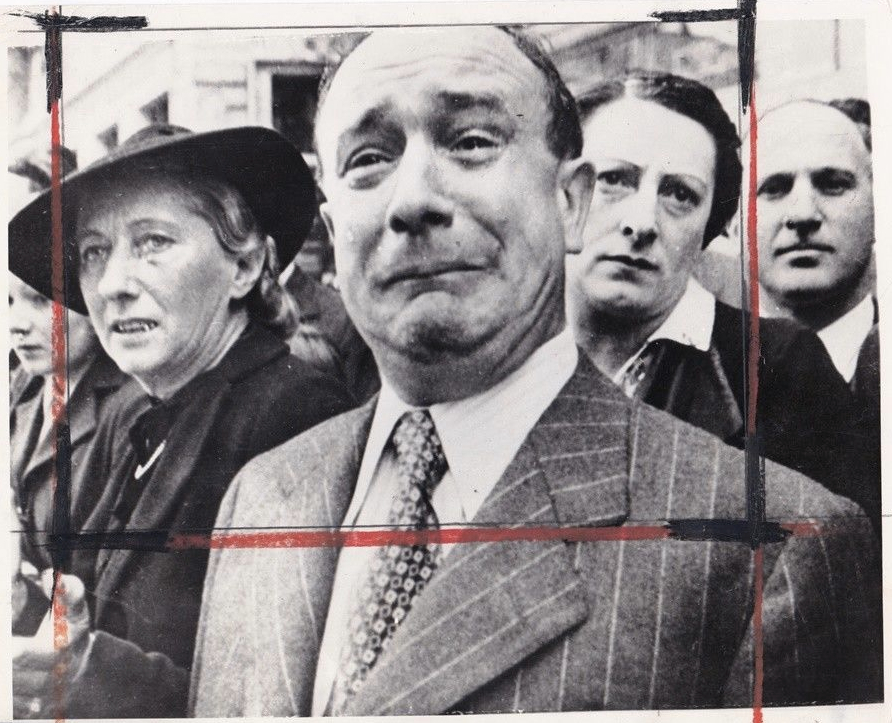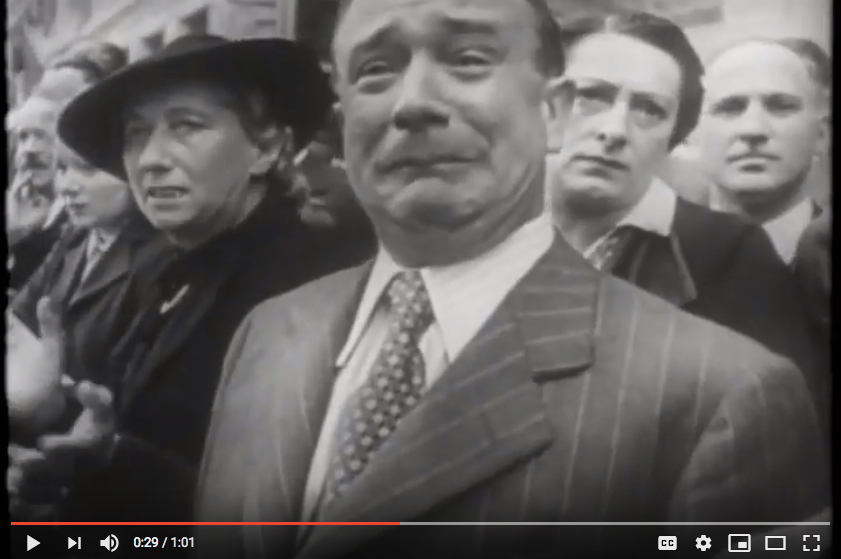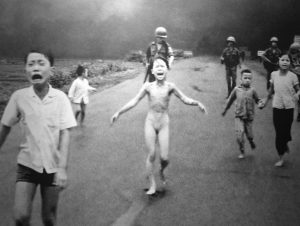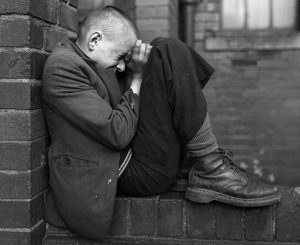For many years, I have looked for a print of the famous war photograph that shows the profound sadness and despair among Frenchmen, not loyal to the Vichy puppet government. I finally found a press print.

Like so many other mystery photographs, this one is attributed to an anonymous photographer. Some sources I found, say the Associated Press. But always one for a good mystery, I started looking a little harder.
There is newsreel footage from a solemn time in Marseille (not Paris, as has been assumed by many) where a parade of French Regimental Banners left French soil for safe-keeping in Algeria, so as not to fall into the hands of the advancing German Army. The banners left France onboard ship, returning only with the Invasion by Allied Forces towards the end of the war. I assume this would have been in the fall of 1939.
I have always wondered why no photographer ever took credit. Why no print was ever made that didn’t seem a little muddy. As though the only way to print this image was from a not-so-great inter-negative. Not an original negative. Not a first-generation print. I always thought the image was so good that the quality was perhaps secondary. Perhaps the image was so important that I should look for it even if it wasn’t in perfect condition.
But then, the great reveal……… I found this old newsreel on Youtube of all places. The link is here, posted by someone called “All is History”:
Here is a screen capture at 29 seconds:

There is no way that a photographer would have been able to take a photograph at the exact same angle, from the exact same place, at the exact moment. In other words, the credit for this incredibly important image goes not to a photographer, but to an unknown cameraman, covering the news. Part of a newsreel for everyone to see in the theaters of what little remained of a free Europe, before the feature film that would follow.
It is a mystery that has probably been solved. It is perhaps a little sad, as we now know that in fact there is no anonymous photographer, but rather a cameraman, who was in the right place at the right time. Of course, now the cameraman is elusive, but that is a mystery for another day.
The ‘photograph’ of the crying Frenchman has become legend. It has become the embodiment of so much pain and suffering by the occupied people of France. It has been claimed as showing a heart-broken spectator to the German army marching down the Champs Elysee. But the footage does not lie. The voice-over tells the story:
“Gone is the Republic of France. Gone is free speech and a free representative government. Gone is liberty, equality, fraternity. With their ears they listen, but their minds and their hearts are down by the Mediterranean, where the colours of the regiments are being taken to Africa, out of the Nazi grasp. The people weep, as their glory departs, but they don’t as yet know that France has hope, a rallying point. Charles de Gaulle, a soldier in the great tradition of France is not surrendering. He will continue to fight, gathering about him loyal Frenchmen from all over the World, who become the free French army. The fighting French. Yes, the people weep as they watch their colours go, not knowing that two years later these same flags would be unfurled in North Africa.”
Clearly, the footage is a mix of film from different locations and different times. The voice-over must have been added later. The mix of Charles de Gaulle footage and the footage of the banners leaving Marseille are not contemporary. However, the footage of the crowds and the banners leaving, I believe, are indeed from the same reel and as such, I can see nothing that would dispute either the origin of the photograph, or the ‘photographer’, the unknown cameraman.
Let me close by saying that I love the photograph. I don’t care that it is a single frame from a few feet of film. It is I believe a symbol. A moment in time. What a photograph can sometimes do when it is very successful. It stands as a testament.
It is France at a time of deep sorrow, captured forever in a photograph. A single frame.
Harbel







